Anúncios
As technology continues to evolve, virtual reality (VR) applications are becoming an integral part of various fields. These applications range from entertainment, such as video games, to critical areas like medical training and rehabilitation. With the rise of augmented reality (AR) and mixed reality (XR), the possibilities for immersive experiences are expanding even further.
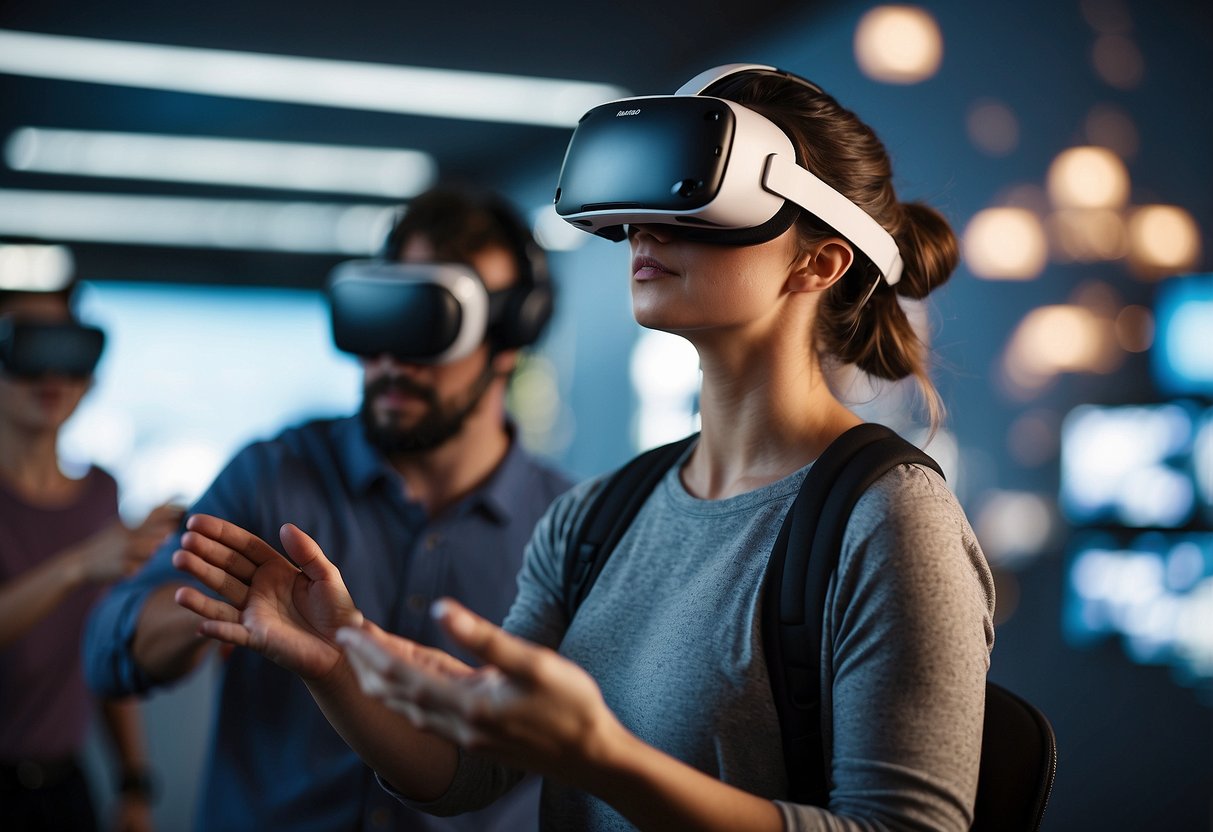
In the medical field, VR is transforming education and training. Healthcare professionals can practice surgery in a simulated environment, allowing for risk-free learning opportunities. Additionally, patients can use VR for rehabilitation, making the process more engaging and effective.
Entertainment is not the only sector benefiting from these innovations. Businesses are exploring VR for virtual meetings and collaborative projects, creating a new way for teams to engage regardless of their physical locations. The future of VR, AR, and XR holds promising potential for enhancing user experiences across many domains.
Historical Evolution of VR Technology
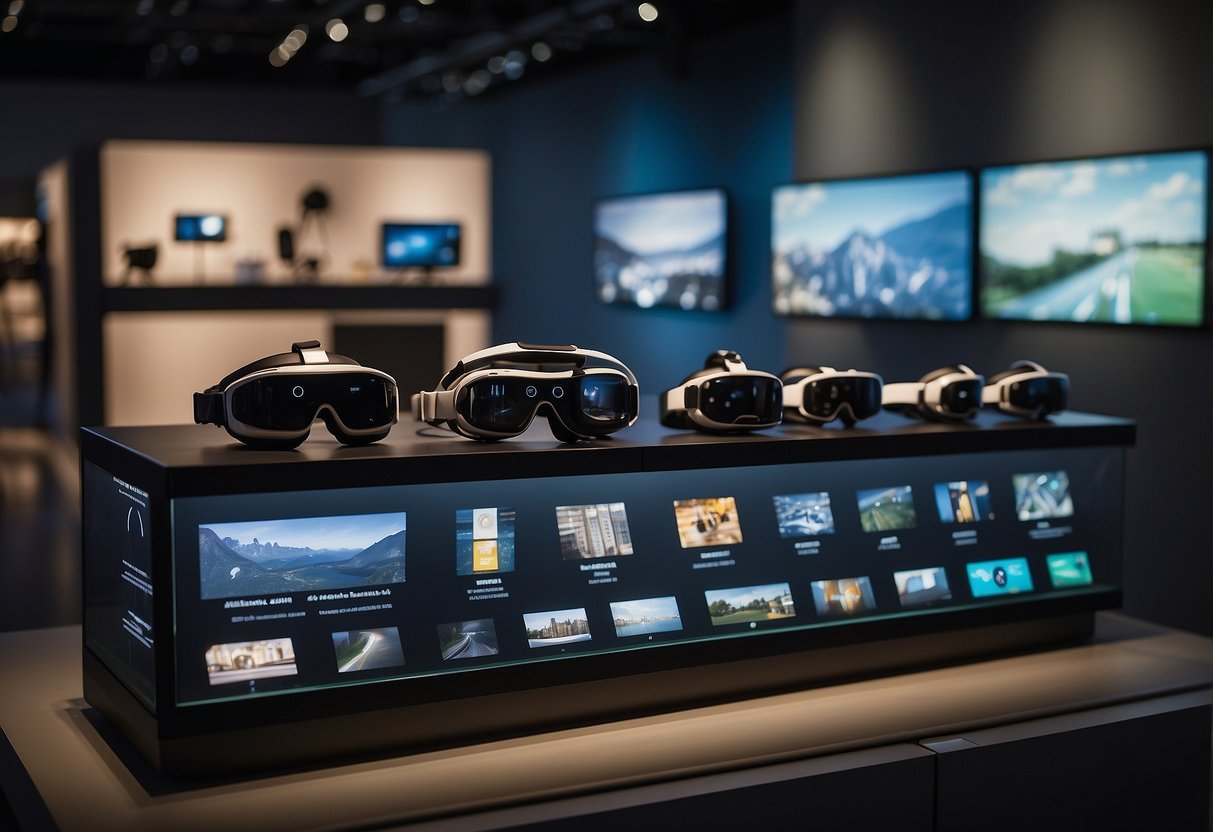
The development of Virtual Reality (VR) technology has traveled a fascinating path, marked by key innovations and breakthroughs. This evolution showcases the shift from early concepts to the advanced applications seen today.
The Genesis of Virtual Reality
The journey of Virtual Reality began in the 1960s with Ivan Sutherland’s groundbreaking work. He created the first head-mounted display known as the “Sword of Damocles.” This device was primitive and cumbersome but laid the foundation for future VR systems. The headset used simple graphics to immerse users in a digital environment, revealing the potential for creating simulated experiences.
In the years that followed, various researchers and companies experimented with VR. However, it wasn’t until the 1990s that VR gained wider recognition. This period saw the development of more interactive and user-friendly systems, though they remained limited in their reach and accessibility.
Key Milestones in VR Development
As technology progressed, several key milestones shaped the VR landscape. The introduction of better sensors and graphics in the 2000s led to more realistic experiences. The emergence of smartphones also played a crucial role in making VR more accessible to the masses.
In 2012, Oculus unveiled its Kickstarter campaign for the Oculus Rift, significantly boosting interest in VR technology. This headset featured improved optics and motion tracking, setting a new standard for immersive experiences. Following this, many other companies began developing their own VR systems, expanding the market further.
Today, VR applications stretch across various fields, including gaming, education, and healthcare, demonstrating the technology’s versatility and potential impact on everyday life.
Understanding Virtual Reality Hardware

Virtual reality hardware is essential for creating immersive experiences. Key components include head-mounted displays (HMDs), input devices, and processing units, all of which work together to provide users with engaging virtual environments.
Head-Mounted Displays
Head-mounted displays (HMDs) are crucial for VR experiences. These devices feature screens placed close to the eyes. They create a sense of immersion by displaying 3D graphics. Popular HMDs include the Oculus Rift and HTC Vive.
HMDs also often include built-in sensors. These sensors track head movements, allowing users to look around in the virtual space. Many headsets have adjustable straps for comfort and fit. Higher quality HMDs provide clearer visuals and wider fields of view, enhancing the overall experience.
Input Devices and Sensors
Input devices allow users to interact with the virtual environment. Common types include handheld controllers, gloves, and even motion sensors. Handheld controllers often come with buttons and joysticks for navigation and action.
Motion sensors play a vital role as well. They track the user’s movements, translating them into actions in the virtual space. Some systems use cameras to detect players’ movements without handheld devices. This adds a layer of freedom and immersion to the experience.
The Role of Processing Units
Processing units are the backbone of VR systems. They handle complex calculations needed to render 3D environments in real-time. High-performance graphics cards are essential for smooth visuals.
Many modern VR systems can connect to powerful gaming computers or consoles. Some mobile VR systems use smartphones as processing units. While more portable, they might not match the performance of dedicated hardware.
Overall, effective VR hardware combines HMDs, input devices, and powerful processing units to create immersive experiences.
The Software Behind Virtual Reality

The software used in virtual reality (VR) is crucial for creating engaging and immersive experiences. It includes development platforms and tools that aid in building applications and environments that users can explore. Understanding these components helps in grasping how VR works and what makes it effective.
Development Platforms and Tools
Various development platforms play a key role in creating VR applications. Popular choices include Unity and Unreal Engine. Both platforms offer powerful features for designing interactive experiences.
Unity is widely used for its user-friendly interface and extensive asset store. It supports C# programming, making it accessible for developers of all skill levels.
Unreal Engine, known for its high-quality graphics, uses C++ and Blueprint scripting. It is preferred for projects requiring detailed visuals.
Tools like Blender or Maya help in 3D modeling and animation. These tools enable designers to create realistic objects and characters. Additionally, development kits from companies like Oculus provide specific resources for creating VR features in applications.
Creating Immersive 3D Environments
Creating immersive 3D environments is essential for effective VR experiences. This process often begins with designing prototypes. Designers create mock-ups of environments to test interactions.
VR applications must consider factors like scale, lighting, and texture. Realistic environments enhance player engagement.
Tools like SketchUp and Cinema 4D allow for designing intricate settings. Programmers use these models in conjunction with game engines to build interactive experiences.
Incorporating audio elements also contributes to immersion. Sound helps users feel more present in the virtual world. By combining visuals and audio, developers create compelling and interactive 3D spaces for users to navigate.
Applications of VR in Various Industries
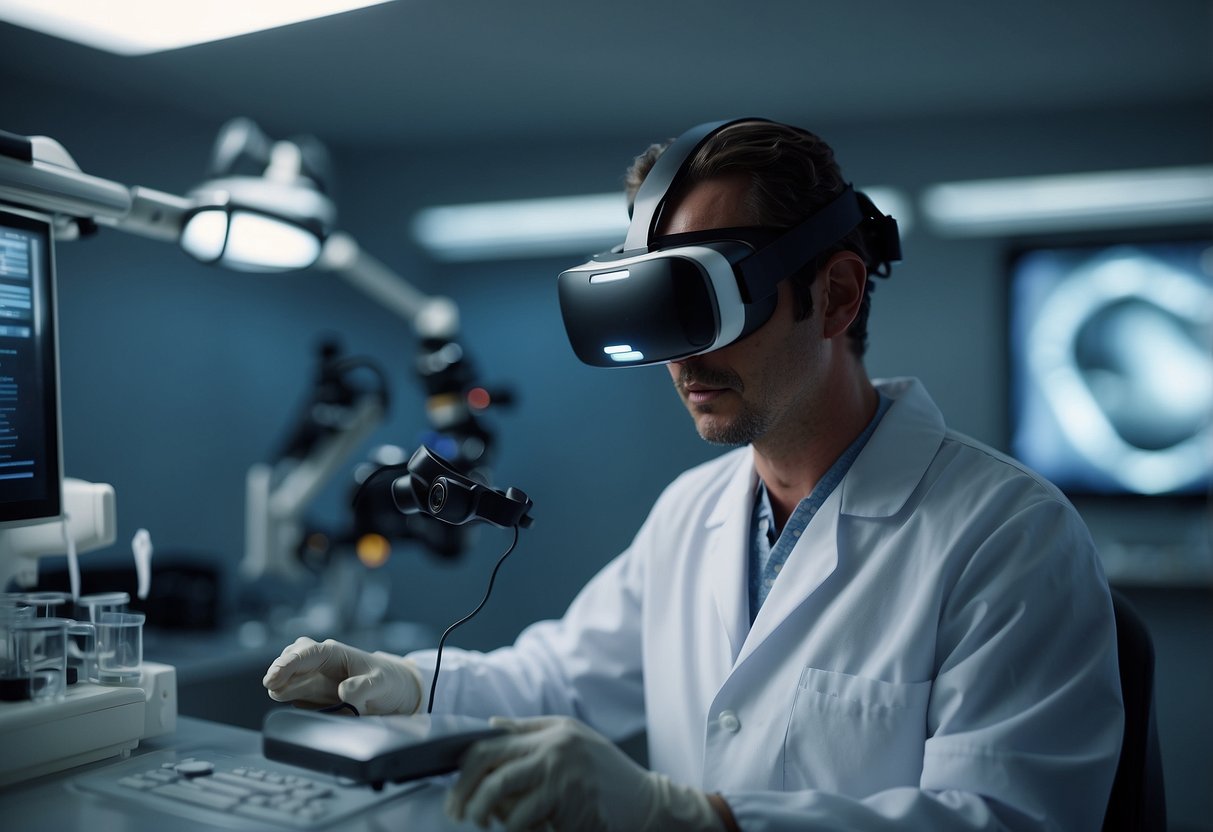
Virtual reality (VR) is transforming numerous industries by providing innovative solutions. Key applications can be found in healthcare, education, real estate, and entertainment. These advancements enhance training, improve patient care, and create engaging experiences.
VR in Healthcare and Therapy
In healthcare, VR is used for surgical training and patient therapy. Surgeons can practice procedures in a safe, controlled environment, allowing for improved skills without risk. Specific simulations help them rehearse operations before performing them on actual patients.
Moreover, VR is beneficial in mental health treatment. It offers exposure therapy for anxiety disorders and phobias. Patients can confront fears in a controlled setting, making it easier for them to manage anxiety. This approach is effective and often leads to significant improvements in mental health outcomes.
Educational Advancements Through VR
Education is being reshaped by VR technology. Classrooms can now transport students to historical sites or distant planets without leaving their seats. This interactive learning makes complex subjects more understandable and engaging.
Teachers utilize VR for skills training, particularly in vocational education. For instance, automotive training programs use VR to simulate repairs on vehicles. These experiences provide students with hands-on practice before entering real-world situations, thereby enhancing their confidence and skills.
Architectural Visualization and Real Estate
In architecture and real estate, VR enhances the design and marketing processes. Architects use VR to create immersive walkthroughs of buildings before they are constructed. This helps in identifying design flaws early and engaging clients more effectively.
Real estate agents utilize VR for virtual tours. Potential buyers can explore properties remotely, saving time and resources. This technology allows them to experience homes in 3D, making the decision-making process easier and more informed.
Entertainment and Gaming
Gaming remains one of the most popular applications of VR. Players can step into vibrant, immersive worlds, providing a deeper level of engagement. This technology allows for unique gameplay experiences that traditional gaming cannot replicate.
Beyond gaming, VR is being integrated into other entertainment forms, such as movies and concerts. Viewers can experience stories from a first-person perspective, making them feel part of the action. This immersion is changing how entertainment is consumed and enjoyed.
Virtual Reality for Training and Simulation
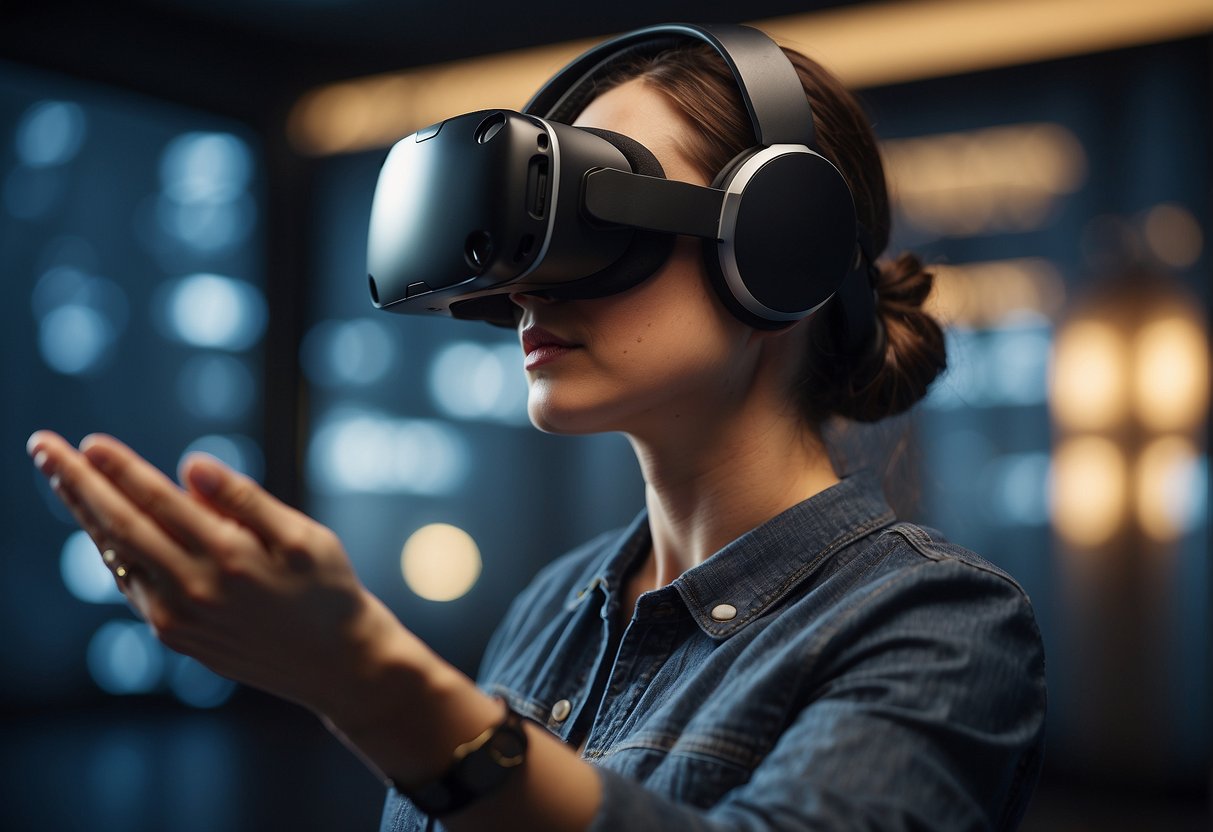
Virtual reality (VR) technology plays a crucial role in various training and simulation applications. Its ability to create fully immersive environments allows users to practice complex skills safely and effectively. Detailed applications can be seen in flight simulation, military training, and medical practices.
Flight and Space Simulators
Flight and space simulators use VR to recreate realistic flying experiences. Pilots and astronauts train in these simulated environments to master controls and handle emergencies. Organizations like NASA utilize these simulators to ensure that personnel are prepared for real-world scenarios.
Key features of flight simulators include:
- Realistic cockpit layouts
- Emergency procedures training
- Weather condition simulations
These tools help trainees develop critical skills without the risks associated with actual flight. This ensures that operators are well-prepared for various challenges in aviation and space exploration.
Military Training and Planning
The military benefits significantly from VR training for tactical exercises and planning. VR environments allow soldiers to engage in realistic combat simulations. This enhances their decision-making skills and teamwork in high-pressure scenarios.
Some advantages of VR in military training include:
- Safe environments for practice
- Cost-effective scenario planning
- Multiplayer capabilities for team exercises
These simulations enable military personnel to experience challenging situations that would be dangerous in reality, preparing them for deployment or combat effectively.
Medical Procedure Practice
In medicine, VR offers a platform for safe, realistic practice of surgical procedures. Medical professionals can rehearse complex surgeries and techniques in a controlled, virtual environment. This method allows for repeated practice and refinement without risk to real patients.
The benefits of VR in medical training include:
- Enhanced skill development
- Immediate feedback on performance
- Access to various medical scenarios
Training in VR also helps reduce anxiety before actual procedures. Medical personnel can familiarize themselves with tools and techniques, ultimately improving patient outcomes.
Therapeutic Uses of Virtual Reality
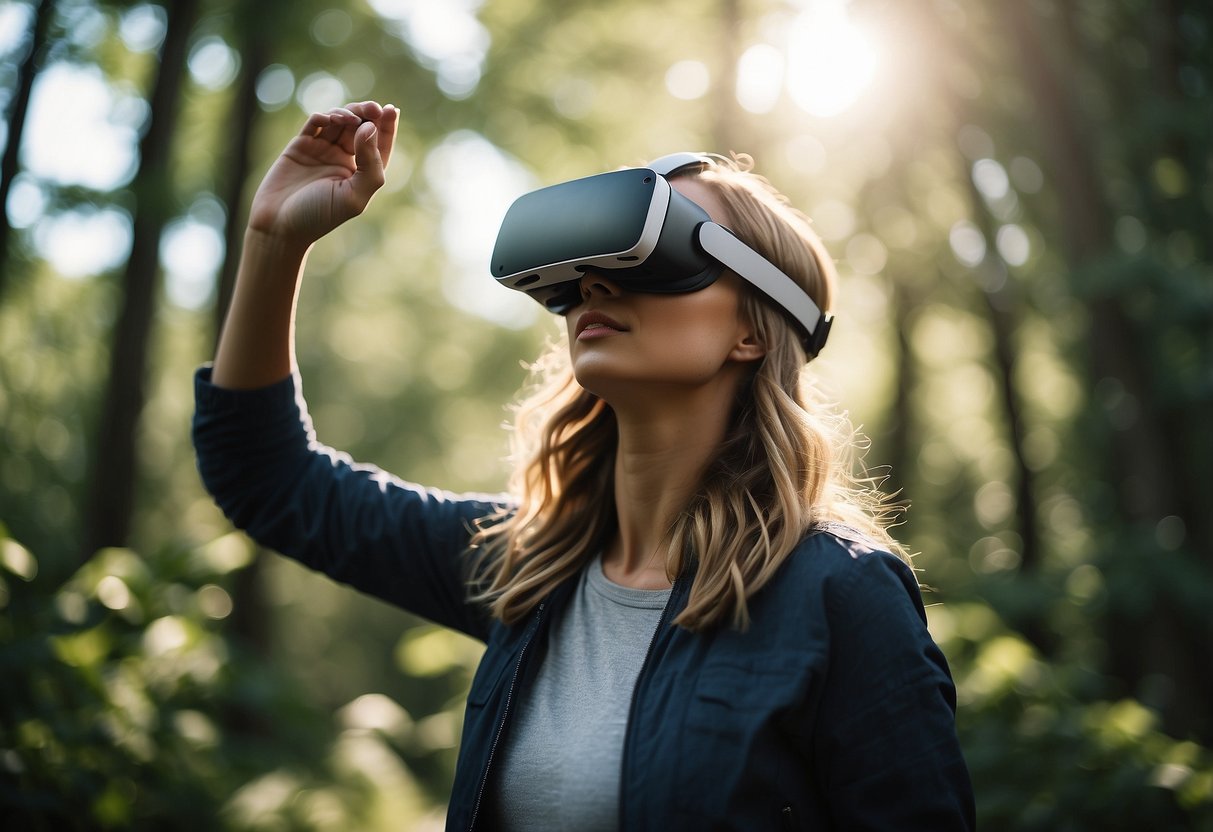
Virtual reality (VR) has emerged as a powerful tool in the treatment of various psychological conditions. It offers immersive experiences that can help individuals manage symptoms of PTSD, anxiety disorders, and phobias. Additionally, VR provides innovative ways to conduct behavioral therapy and relaxation programs, enhancing traditional therapeutic approaches.
Managing PTSD and Anxiety Disorders
VR technology is increasingly utilized to address PTSD and anxiety disorders. It allows patients to gradually face their fears in a controlled environment. For instance, exposure therapy can simulate traumatic events, helping patients process their experiences. In studies, VR has shown promising results in reducing symptoms and improving coping strategies.
Participants engage in scenarios that mirror real-life situations. This exposure helps desensitize their reactions and adapt their responses. With careful guidance from therapists, individuals can practice relaxation techniques during the experience. This dual approach enhances the therapeutic process, leading to better outcomes.
Behavioral Therapy and Relaxation Programs
In behavioral therapy, VR creates unique opportunities for practicing skills. Patients can interact with virtual scenarios that promote positive behaviors. This might include role-playing social interactions or confronting specific phobias. The immersive nature of VR often leads to increased engagement and motivation.
Relaxation programs also benefit from VR. Users can enter calming virtual environments designed to reduce stress. These experiences may involve guided imagery featuring soothing visuals and sounds. By practicing relaxation techniques in VR, individuals can develop skills transferable to real-life situations.
Using VR in therapy not only enhances traditional methods but also makes the process more interactive.
Exploring the Future of VR
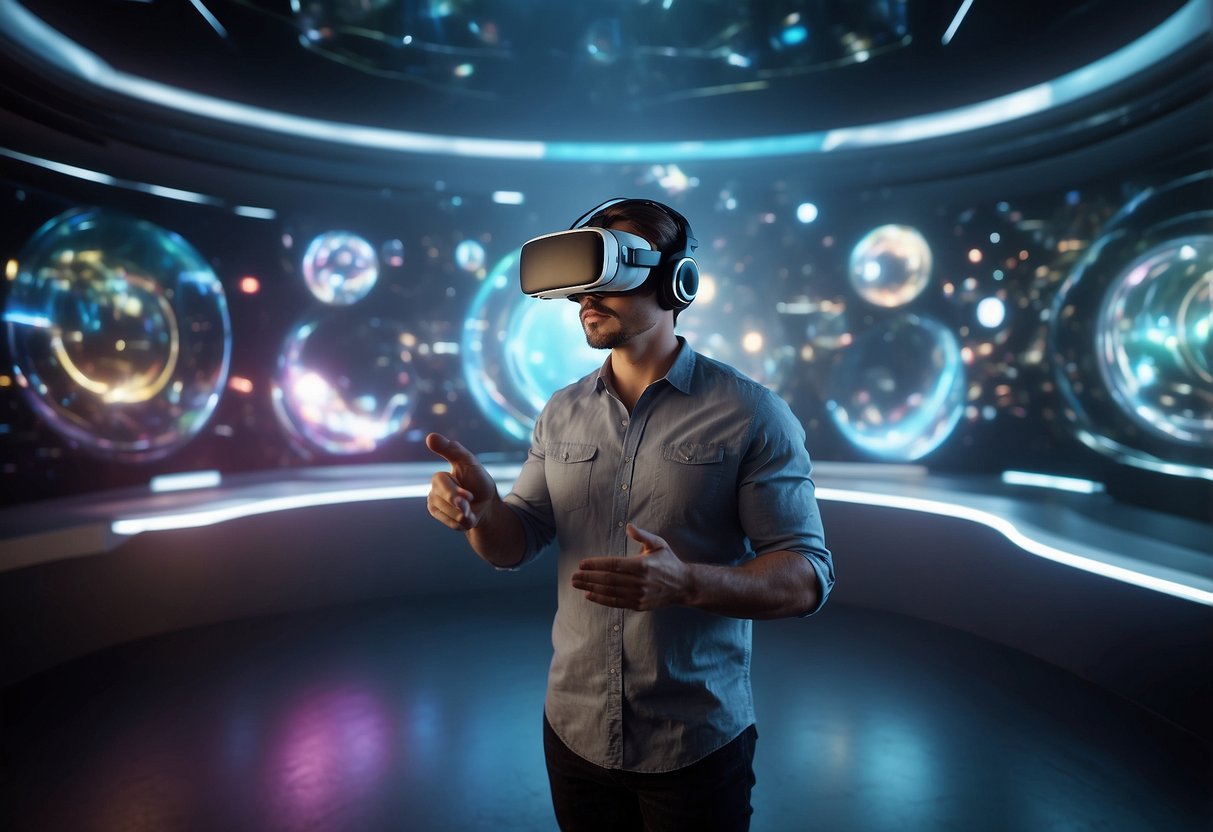
The future of virtual reality (VR) looks promising as it continues to evolve in market engagement and technological innovation. Significant advancements in both virtual and augmented reality are reshaping how consumers interact with digital content and each other.
Market Trends and Consumer Adoption
The VR market has been experiencing robust growth, driven by advancements in technology and increasing consumer interest. The rising demand for immersive experiences in gaming, education, and retail creates opportunities for companies to engage users in new ways.
Major players like Apple are pushing VR boundaries with devices like the Vision Pro. This high-resolution device is designed for comfort and interactivity, enabling users to blend reality with digital elements. As consumers adopt these innovations, VR applications are expanding across various sectors.
More companies are exploring virtual shopping experiences. This offers customers an engaging way to browse products, which highlights VR’s potential in enhancing the retail experience.
Innovations in Virtual and Augmented Reality
Innovations in VR and augmented reality (AR) are paving the way for new applications and experiences. Technologies like mixed reality are merging digital content with the real world, allowing for deeper engagement.
Education, healthcare, and training simulations are seeing promising developments. VR is being used to simulate complex procedures, making training more realistic and effective. Additionally, gaming continues to evolve with more immersive titles that utilize these advancements.
The integration of artificial intelligence with VR also holds great promise. It can personalize user experiences, making interactions more engaging and tailored. This capability signifies a leap toward more sophisticated virtual environments that adapt to individual preferences.
As the market continues to grow, the focus on user experience and immersive storytelling will shape the future of VR technologies.
Integrating VR into Daily Life
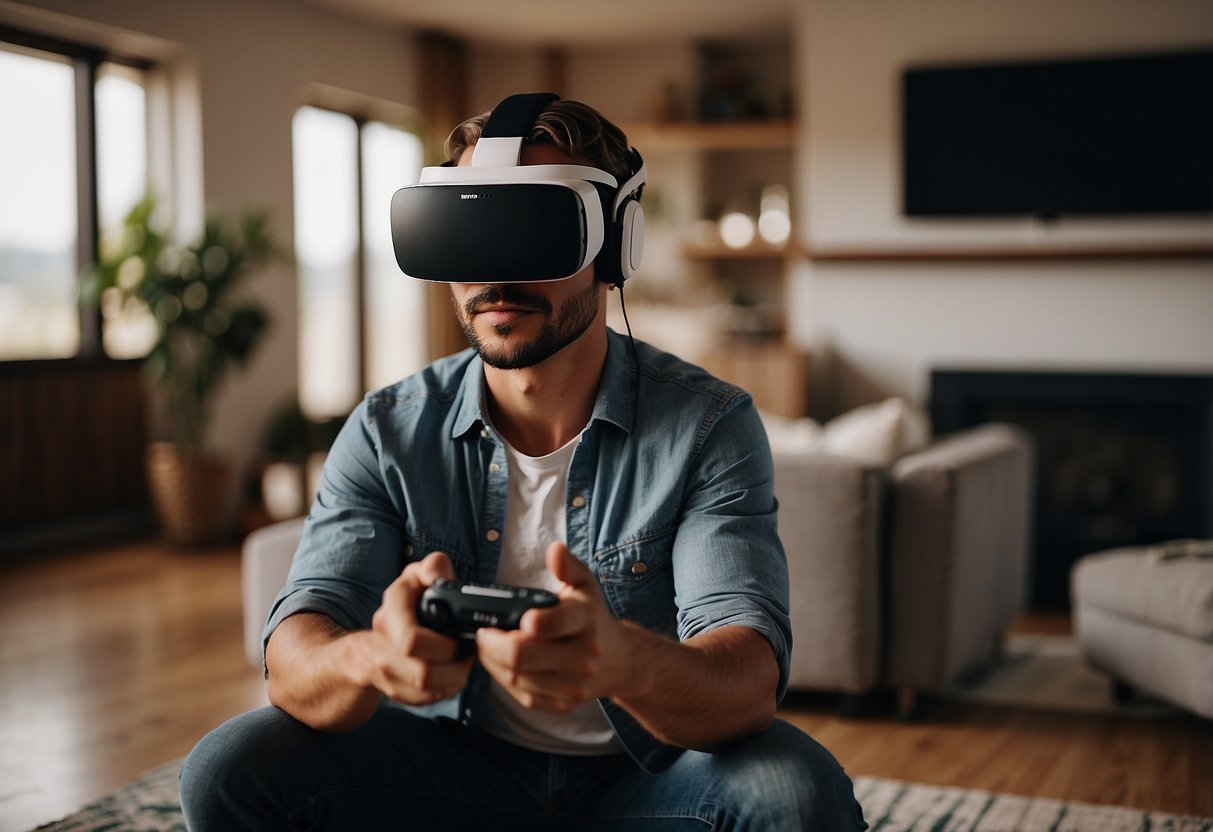
Virtual reality is becoming a practical part of daily life. It transforms various areas, including workspaces, social interactions, and fitness programs, changing how people connect and engage with each other and their tasks.
Virtual Reality Workspaces
Virtual reality workspaces, like Horizon Workrooms, provide a unique platform for remote work. These digital environments allow users to create a virtual office, facilitating collaboration with team members across the globe.
With VR headsets, individuals can enter shared spaces, interact with digital whiteboards, and participate in meetings as if they were in the same room. This setup enhances productivity by making remote work feel more connected and engaging.
Organizations are increasingly adopting VR tools to foster teamwork, improve communication, and maintain employee engagement. This innovative approach to work can lead to better project outcomes and higher job satisfaction.
Social Interaction and Remote Collaboration
VR significantly enhances social interaction and remote collaboration. Users can host virtual gatherings, allowing friends and family to meet in shared virtual spaces. This experience is essential for maintaining relationships over long distances.
During these sessions, participants can engage in activities like playing games or attending events together, making the interactions feel more personal and immersive.
Moreover, companies can organize team-building events in virtual environments. These gatherings promote camaraderie, enabling colleagues to bond despite physical separation. This innovation helps bridge the gap between remote colleagues, making teamwork more enjoyable and effective.
Fitness and Wellness Programs
Fitness and wellness programs are also integrating VR technologies. Users can engage in virtual workouts, participate in immersive fitness classes, or even explore scenic landscapes while exercising.
These VR programs make fitness accessible and motivating. Participants can join live sessions or choose from numerous on-demand classes tailored to various fitness levels.
Furthermore, some programs incorporate relaxation and mindfulness exercises, encouraging users to prioritize mental well-being. By creating enjoyable and interactive experiences, VR helps people stay active and engaged in their health journey.